Diverticular Disease and Diverticulitis
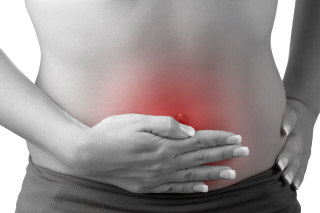 The large intestines play two important roles in digestion: extracting
nutrients from food and removing undigested food materials from the body as
stool. The colon is a section of the large intestines. Like a car tire, the
colon has an inner soft tissue covered by a firmer, tougher muscle layer. Moving
the stool forward can be difficult especially if it is hard. The colon uses high
pressure that causes its internal wall to wear. After many years of wear and
tear, the internal wall of the colon can develop swellings called diverticula.
The diverticula can cause inflammation and pain. The patient experiences pain in
the lower abdomen and a bloated feeling. This health problem of the colon is
called diverticular disease. The disease can progress to a more severe case if
bacteria infect the swellings. Diverticulitis is the name of the serious
condition that results from infection of the bulges. Its symptoms include severe
abdominal pain and high fever. Diverticular disease is associated with a low
fiber diet. Therefore, it is most prevalent in western countries where
traditional diets have low fiber content. This article describes the symptoms,
causes, diagnosis, treatment, and prevention of diverticular disease and
diverticulitis. The large intestines play two important roles in digestion: extracting
nutrients from food and removing undigested food materials from the body as
stool. The colon is a section of the large intestines. Like a car tire, the
colon has an inner soft tissue covered by a firmer, tougher muscle layer. Moving
the stool forward can be difficult especially if it is hard. The colon uses high
pressure that causes its internal wall to wear. After many years of wear and
tear, the internal wall of the colon can develop swellings called diverticula.
The diverticula can cause inflammation and pain. The patient experiences pain in
the lower abdomen and a bloated feeling. This health problem of the colon is
called diverticular disease. The disease can progress to a more severe case if
bacteria infect the swellings. Diverticulitis is the name of the serious
condition that results from infection of the bulges. Its symptoms include severe
abdominal pain and high fever. Diverticular disease is associated with a low
fiber diet. Therefore, it is most prevalent in western countries where
traditional diets have low fiber content. This article describes the symptoms,
causes, diagnosis, treatment, and prevention of diverticular disease and
diverticulitis.
Overview of Diverticular Disease and Diverticulitis
Diverticula disease is associated with aging. As one advances in age, the
high pressure required to move hard stool weakens parts of the internal wall of
the colon. Consequently, inner layer splits the weak points and form bulges
called diverticula. The size of diverticula range from 5 to 10 millimeters.
Majority of people with diverticula do not develop the symptoms of diverticula
disease. Usually, one in four people with diverticula experience the symptoms
including abdominal pains. Diverticulitis occurs when bacteria infects one or
more diverticula. A diverticulitis patient experiences more severe symptoms of
diverticular disease.
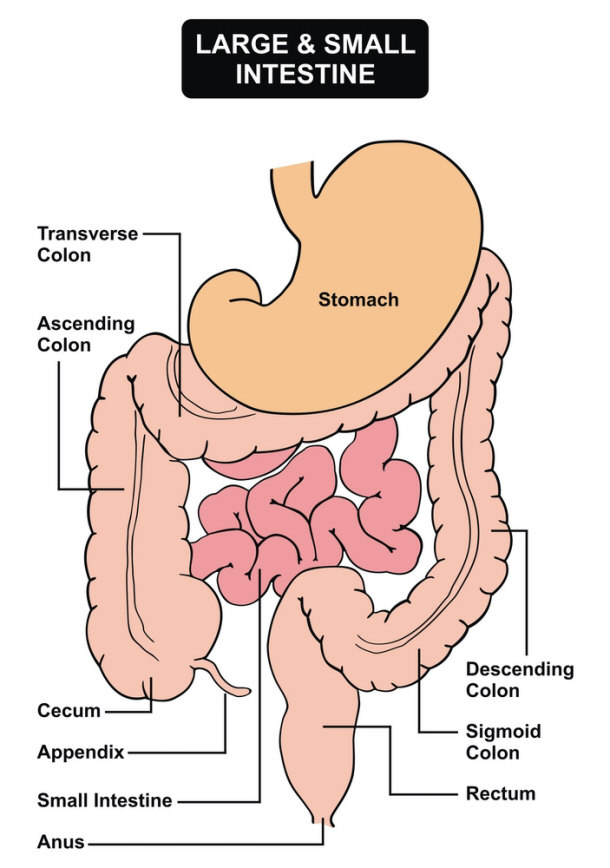
The patient of diverticular disease can ease the symptoms by adopting a
high-fiber diet. Furthermore, the patient can take paracetamol to relieve the
symptoms. However, ibuprofen or aspirin can cause stomach upsets. You can treat
mild diverticulitis at home with antibiotics. Nevertheless, you should consult
your doctor to prevent complications if your case is serious. To prevent serious
complications, the doctor can recommend surgery to remove the affected part of
the colon.
Diverticular disease and diverticulitis affect women and men equally.
However, it affects more men under the age fifty than women. Medical
professionals describe the disease as a western disease because it is more
prevalent in North American and Western Europe. It is associated with the low
fiber diets that are traditional in these areas. Usually, one in two people in
western countries have the disease at the age of fifty and seventy percent at
the age of eighty. Nevertheless, the disease is rare in Asian and African
countries where people traditionally eat high-fiber diets.
Diverticular Disease and Diverticulitis Symptoms
Intermittent pain in the lower abdomen is the main symptom of diverticular
disease. The patient usually experiences the pain in the left side of the
abdomen. The pain intensifies during meals or shortly after. However, flatulence
or passing stool can relieve the pain. The other symptoms are diarrhea,
constipation, episodes of constipation followed by diarrhea, bleeding from the
rectum, and bloating.
Rectal bleeding can occur because the hard stool damages the colon blood
vessels already weakened by the disease. Although the bleeding is usually
painless, it can be serious to loose too much blood. Therefore, consult your
doctor to stop the bleeding urgently. Symptoms of heavy bleeding include short
breath, dizziness, pale clammy skin, and confusion.
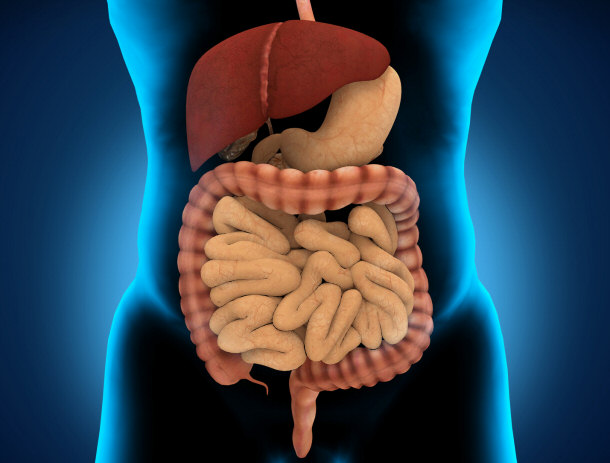
The main symptom of diverticulitis is persistent severe abdominal pain. The
pain usually begins just below the belly button then moves to the left of the
abdomen. However, it moves to the right of the abdomen in Asian people because
of genetic predisposition. Diverticulitis inflammation can cause bowel
obstruction. Besides abdominal pain, the patient can also experience fever of
over 100.4ºF, bleeding from the rectum, sick feeling and constipation. Other
symptoms of diverticulitis include abdominal bloating or swelling, diarrhea, and
thin stools. To avoid complications, you should consult your doctor as soon as
you notice the symptoms of diverticulitis.
Functions of the Colon That Can Lead To Diverticular Disease
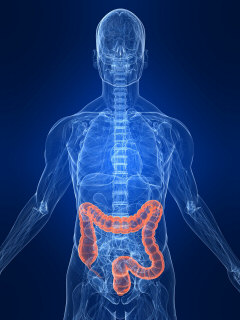 The colon has five main motor functions: different sections play specific
roles. First, it mixes its contents to enhance absorption of short chain fatty
acids, electrolytes, water, and bacterial metabolites. Therefore, it extracts
useful fluids from the food residues and can dehydrate the feces. The feces can
become too dry and cause constipation if it stays long in the colon. Second, it
maintains the right intraluminal bacterial mass. Third, it moves its contents
towards the anus. Portions of the feces enter the colon from the small
intestines and exit into the rectum. It moves the feces forward with wavelike
movements generated by contraction of its muscles. The muscles contract and
relax to apply pressure for the movement. They contract and relax at regular
intervals to achieve propulsion. The colon has five main motor functions: different sections play specific
roles. First, it mixes its contents to enhance absorption of short chain fatty
acids, electrolytes, water, and bacterial metabolites. Therefore, it extracts
useful fluids from the food residues and can dehydrate the feces. The feces can
become too dry and cause constipation if it stays long in the colon. Second, it
maintains the right intraluminal bacterial mass. Third, it moves its contents
towards the anus. Portions of the feces enter the colon from the small
intestines and exit into the rectum. It moves the feces forward with wavelike
movements generated by contraction of its muscles. The muscles contract and
relax to apply pressure for the movement. They contract and relax at regular
intervals to achieve propulsion.
The brain generates the contractions by sending impulses to special colon
cells called interstitial cells of Cajal. The cells convey the impulses to the
colon smooth muscles. A portion moves for a short distance then stops for
nutrients extraction to take place. This motion-and-rest process recurs several
times until the portion exits the colon. The sections of the colon that propel
the feces towards the rectum are the sigmoid, descending, and transverse colons.
Fourth, it stores the fecal material to await defecation. The ascending colon
functions as a storage chamber for feces. Fifth, it rapidly removes its contents
during defecation
Causes of Diverticular Disease and Diverticulitis
The colon extracts water from its contents, which can become hard and
difficult to move. Therefore, the colon uses high pressure to move hard stool
especially small pieces. The high pressure can create weak spots in the internal
wall of the colon. This enables the inner tissue of colon wall to protrude
through the weak spots and form diverticula. Diverticula are associated with low
fiber diet, which makes the stool soft and easy to move through the colon. Cases
of the disease are very low in places such as South Asia and Africa where the
traditional diet is high in fiber.
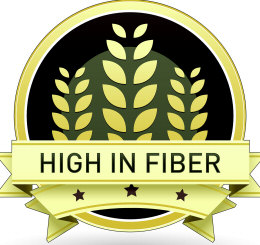 On the other hand, cases of the disease are high in places such as North
America and Western Europe where the traditional diet is low in fiber.
Nevertheless, there is no clinical evidence that supports the relation between
diverticular disease and high fiber diet. Only one out of four people with
diverticula develop the symptoms. Use of NSAIDs such as naproxen and ibuprofen,
smoking, obesity, lack of exercise or frequent constipation may cause the
symptom to develop. On the other hand, cases of the disease are high in places such as North
America and Western Europe where the traditional diet is low in fiber.
Nevertheless, there is no clinical evidence that supports the relation between
diverticular disease and high fiber diet. Only one out of four people with
diverticula develop the symptoms. Use of NSAIDs such as naproxen and ibuprofen,
smoking, obesity, lack of exercise or frequent constipation may cause the
symptom to develop.
Diverticulitis develops when bacteria infects one or more of the diverticula.
Bacteria from a piece of stool can multiply and infect the diverticula when a
pouch in the colon traps it.
Location of the Diverticula
The colon extends from the ileum of the small intestines to the rectum. It
bends three times to frame the small intestines. Between the bends, it has four
distinct sections distinguished by their positions in the abdominal cavity.
First, the ascending colon joins the small intestines. It is at the right side
of the cavity. Second, the traverse colon is horizontal and extends from the
right to the left of the cavity. Third, the descending colon lies on the left of
the cavity. Fourth, the sigmoid colon is s-shaped. It joins the rectum.
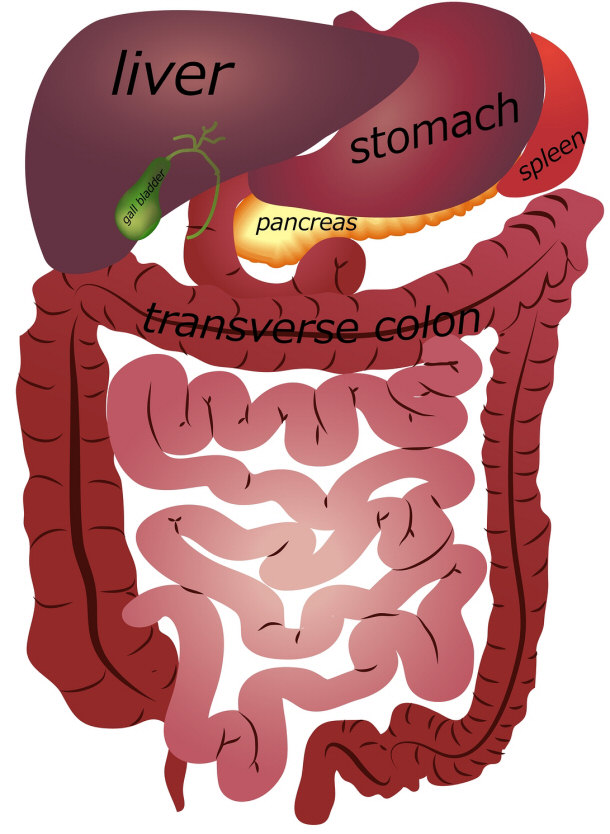
The average length of the colon of an adult person is 60 inches. Ascending
colon is eight, traverse colon is 18, descending colon is12, and sigmoid colon
is 18 inches long. Diverticula can form in any section of the colon.
Nevertheless, they are most common in the sigmoid and descending colon sections.
These are the last sections of the colon. The feces usually reach these sections
when it is harder because the first sections extract water from it.
Diverticular Disease and Diverticulitis Diagnosis
The symptoms alone cannot confirm diverticular disease because there are
other health problems with similar symptoms. For instance, irritable bowel
syndrome (IBS) and coeliac disease have similar symptoms. Therefore, diagnosis
of diverticular disease involves carrying out tests that rule out these health
conditions. Doctors usually use two tests to diagnose diverticular disease.
First, colonoscopy involves taking photographs of the inside of the colon with a
small camera. The doctor mounts the camera at the end of a tube and inserts the
tube into the colon. Prior to the procedure, the doctor gives the patient a
laxative to empty the bowel, a local anesthetic to numb pain, and a sedative to
help the patient relax. However, the patient may feel slight discomfort during
the procedure.
|
Monitoring Gastrointestinal Endoscope:
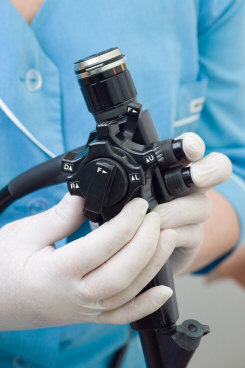
|
Lastly, barium enema x-ray involves taking a series of x-ray images of the
internal wall after spraying it with barium solution. Soft tissue such as
diverticula can show on x-ray images when coated with barium solution. The
doctor inserts a tube into the rectum and uses it to spray the colon with barium
solution. Prior to the procedure, the doctor gives the patient a laxative to
empty the bowel, a local anesthetic to numb pain, and a sedative to help the
patient relax. For sometime after the procedure, the barium solution passes out
in the stool, which appears white and discolored.
The doctor can diagnose diverticulitis by physical examination and from the
symptoms if the patient had a previous history of diverticular disease. A blood
test showing a high number of white blood cells can confirm infection. However,
for a patient with no history of diverticular disease, the doctor can perform
further tests to rule out other problems, such as a hernia or gallstones, which
have similar symptoms. The doctor can perform the barium enema x-ray or
colonscopy as explained above. Alternatively, the doctor can perform a
computerized tomography (CT) scan that uses a computer to create detailed 3-D
images from a series of x-ray images. The CT scan can reveal spread of infection
to other parts. Furthermore, the CT scan can show complications such as an
abscess.
Treatment of Diverticular Disease
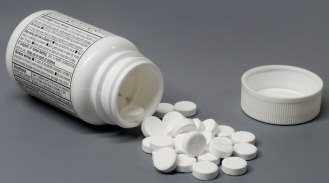 Consult your doctor if it is your first time to experience the symptoms of
diverticular disease. The doctor can rule out health problems such as irritable
bowel syndrome that have similar symptoms. You can also consult your doctor to
subscribe a laxative if you have constipation. However, you can treat the
disease at home with painkillers, high fiber diet, and antibiotics if you had a
previous diagnosis. You can use over-the-counter paracetamol to manage the
symptoms and incorporating fiber in your diet. Nevertheless, do not use
non-steroidal anti-inflammatory drugs (NSAIDs), such as ibuprofen and aspirin,
because they can increase risk of bleeding and cause stomach upset. A high fiber
diet helps control the symptoms because fiber makes the stool soft. You should
eat between 0.6 oz and 1 oz per day depending on individual weight and height.
Gradually increase the amount of fiber you take to avoid bloating and
flatulence. The full benefits of high fiber diet will show after one month. Consult your doctor if it is your first time to experience the symptoms of
diverticular disease. The doctor can rule out health problems such as irritable
bowel syndrome that have similar symptoms. You can also consult your doctor to
subscribe a laxative if you have constipation. However, you can treat the
disease at home with painkillers, high fiber diet, and antibiotics if you had a
previous diagnosis. You can use over-the-counter paracetamol to manage the
symptoms and incorporating fiber in your diet. Nevertheless, do not use
non-steroidal anti-inflammatory drugs (NSAIDs), such as ibuprofen and aspirin,
because they can increase risk of bleeding and cause stomach upset. A high fiber
diet helps control the symptoms because fiber makes the stool soft. You should
eat between 0.6 oz and 1 oz per day depending on individual weight and height.
Gradually increase the amount of fiber you take to avoid bloating and
flatulence. The full benefits of high fiber diet will show after one month.
Treatment of Diverticulitis
Home Treatment - You can treat mild diverticulitis at home. The doctor can
prescribe antibiotics to treat the infection and you can use paracetamol to
manage the pain. You should finish the full dose of antibiotics even after the
symptoms have subsided. The antibiotics may cause side effects such as diarrhea
and vomiting. Furthermore, the doctor may prescribe a fluids only diet because
solid food may worsen the symptoms. Later you can reintroduce solid food
gradually over a period of two to three days.
Hospital Treatment – You should go for in-patient hospital treatment if you
have severe diverticulitis. You should also seek hospital treatment if
paracetamol does not control the pain, the symptoms do not improve after two
days treatment at home, the doctor suspects complications, your immune system is
weak, you have poor state of health, you are unable to take antibiotics orally,
or you are unable to drink fluids. At the hospital, you can get antibiotics
injections and intravenous drip nourishment. Most patients respond quickly to
hospital treatment and the symptoms improve after two to three days.
Surgery Treatment - Doctors usually recommend surgery for the following three
cases. First, the patient had previous serious diverticulitis complications.
Second, the patient had diverticular disease symptoms since childhood. A patient
with a long history of diverticular disease will most likely have diverticulitis
complications. Lastly, the patient is vulnerable to infections or has a weak
immune system. You should understand the risks and benefits before you consent
to the surgery. The doctor can use the following surgery procedures depending on
the severity of the disease.
Colectomy is the surgery procedure to remove the affected part of the
intestine. There are two methods of colectomy. First, in open colectomy, the
doctor incises the abdomen to access and remove the affected part of the colon.
Lastly, in laparoscopic colectomy, the doctor makes a small hole in the abdomen
through which to insert an instrument for removing the affected part of the
colon. The instrument has a camera to guide the surgeon.
Another surgery procedure is stoma surgery. The surgeon can perform stoma
surgery to make a stool bypass to enable the affected or incised part of the
colon to heal. Stoma surgery enables removal of the stool before it reaches the
affected part of the colon. A stoma is a small hole the surgeon makes in the
abdomen for the bypass. The patient wears a bag to collect the stool. There are
two methods of stoma surgery. First, the surgeon can perform ileostomy if the
affected part of the colon is near the end of the small intestines. The surgeon
cuts off the end of the small intestines from the colon and passes it out
through a stoma in the right of the abdomen. The surgeon then seals the colon.
Lastly, the surgeon can perform a colostomy if the affected part of the colon is
near end of the rectum. The surgeon cuts the colon and passes the upper end out
through a stoma in the lower abdomen.
A stoma bypass is temporary and the surgeon removes it once the colon heals:
it usually takes at least nine weeks. However, the surgeon can make a permanent
stoma bypass if the affected section of the colon is large. A few cases of
diverticular disease and diverticulitis treated with surgery recur.
Diverticular Disease and Diverticulitis Complications
If diverticulitis is not treated early, serious complications that require
surgery can develop. Patients of diverticulitis who are less than 50 years old
have a high risk of developing complications. Diverticulitis usually causes the
following complications.
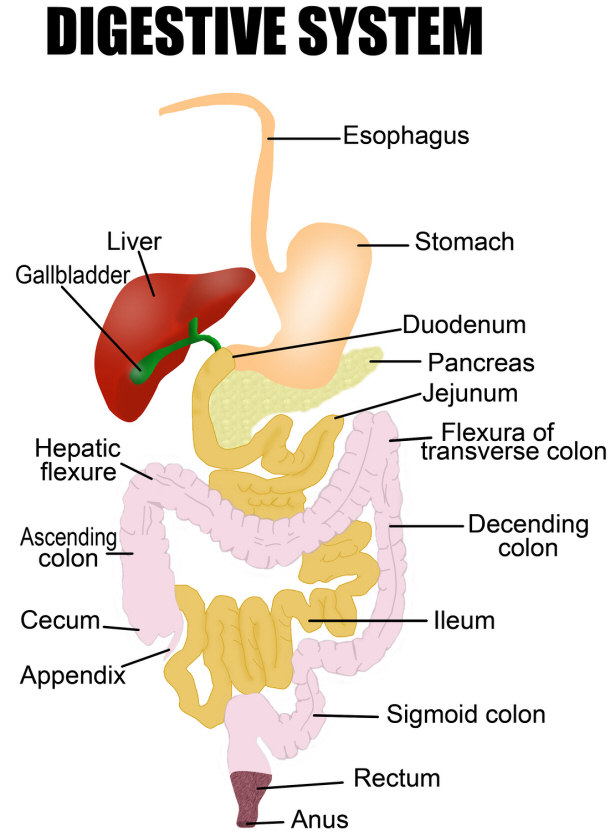
An abscess is a lump or pus-filled cavity in the tissue. It is the most
common diverticulitis complication. The doctor can use computerized tomography
(CT) scans to locate an abscess. Percutaneous abscess drainage (PAD) is the
procedure for treating abscesses. The doctor uses a small needle connected to a
tube. The doctor passes the needle through the abdomen into the abscess and uses
it to drain the pus from the abscess. The procedure is not painful because the
doctor uses a local anesthetic. The doctor can repeat the procedure several
times to remove all the pus from a large abscess. However, instead of PAD
antibiotics can treat a small abscess of about 1.5 inches.
Fistula is another common diverticulitis complication. A fistula is an
abnormal tunnel that connects two parts of the body. For instance, a fistula can
connect the colon and the bladder. Therefore, the fistula can enable bacteria
from one part of the body to infect another part. For instance, fistula
connecting the colon and the bladder can enable diverticulitis bacteria to
infect the bladder and cause cystitis, a serious bladder disease. Doctors
usually used surgery to remove the part of the colon with a fistula.
Peritonitis is an infection of the lining of the abdomen by bacteria from
ruptured diverticula. The complication should be urgently treated with
antibiotics because it can be life threatening. Alternatively, the doctor can
perform surgery to repair damaged parts of the colon and drain pus.
Intestinal obstruction is blockage of the colon caused by serious scarring.
You should urgently seek treatment for a fully blocked colon to prevent colon
tissues from decaying and rupturing. The complication can cause peritonitis if
it ruptures. A partially blocked colon is not a medical emergency. However, it
you should treat it to relieve pain and prevent it from interfering with
digestion. The doctors use antibiotics to treat the obstruction or surgery to
remove the blocked part. Alternatively, the doctor can use temporary or
permanent colostomy if the scarring is extensive. Another diverticulitis
complication is severe bleeding. The doctor can perform a blood transfusion to
replace lost blood.
How to Prevent Diverticular Disease and Diverticulitis
You should eat a high fiber diet to prevent diverticular disease.
Furthermore, a high fiber diet can improve the symptoms of the disease. Dietary
fiber is the indigestible part of food of plant origin. Eating high fiber
content food has many health benefits. One of its benefits is that it makes
stool easy to pass through the colon. It increases the volume of stool and makes
it soft. Therefore, it helps shorten the transit time of stool in the colon. To
prevent diverticular disease, women should consume at least 0.9 oz and men at
least 1.2 oz per day.
Rice Salad with Tomatoes- Example of High Fiber Meal
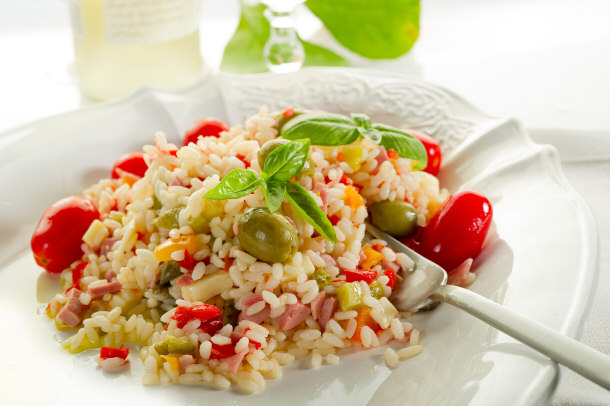
There are two types of fiber: water-soluble and water-insoluble. Insoluble
fiber makes the feces bulky. It absorbs water in the digestive tract and makes
the feces soft and easy to move. Therefore, insoluble fiber tends to make food
move faster in the colon. Both types of fiber readily ferment in the colon and
produce gases and other byproducts. Increase the amount of fiber you eat
gradually over a period to prevent its side effects such as flatulence and
bloating. Furthermore, drink plenty of fluids, including water, to prevent the
fiber side effects.
Conclusion
Good sources of fiber are fresh fruits such as apples, oranges, and mangoes;
dried fruits such as prunes and apricots; vegetables such as peas, kidney beans,
and baked beans; nuts such as peanuts and almonds; breakfast cereals such as
high-fiber flakes; and starchy foods such as pasta, rice, popcorn, and bread.
You can also use fiber supplements from health food stores and pharmacists that
are usually in sachets to mix with water. Preventive medicine is the best
medicine and diverticular disease can be easily avoided by ensuring that you
consume enough fiber in a day. All of the procedures and surgeries involved with
treating advanced diverticular disease are mostly horrible, invasive, and
sometimes require a decent amount of recovery time.
Diseases & Conditions
Top Lists:
Top 10 Most Common Genetic Disorders
Top 15 Most Disturbing Skin Conditions
10 Unusual Phobias
Informational:
Diverticular Disease and Diverticulitis
What is Turner Syndrome and Why Does it Affect Only Females?
Alice in Wonderland Syndrome and How to Treat the Symptoms
Herniated Disc: Symptoms and Treatments
Pinch Nerve: The Cause of Remote Pain
Dealing With a Child Who Has a Fever
How Unhealthy Diet Could Trigger Inflammatory Arthritis
Phobias: Understanding How They Develop and Treatments
Depression Facts, Symptoms & Treatment
Earaches - Causes and Treatments
Symptoms of Borderline Personality Disorder and How to Deal with It
Seasonal Affective Disorder: Does Light Therapy Help?
What Really Causes Dandruff and How Can You Treat the Symptoms
Treating Plantar Fasciitis or Heel and Arch Pain
Symptoms and Treatments of Aplastic Anemia
Using Sclerotherapy to Get Rid of Varicose Veins
Are the Side Effects of HGH Supplements Worth It?
ADD/ADHD Symptoms and Treatment
What are the Options for Hair Loss Treatments
Options for Frontal Hair Loss Treatment |